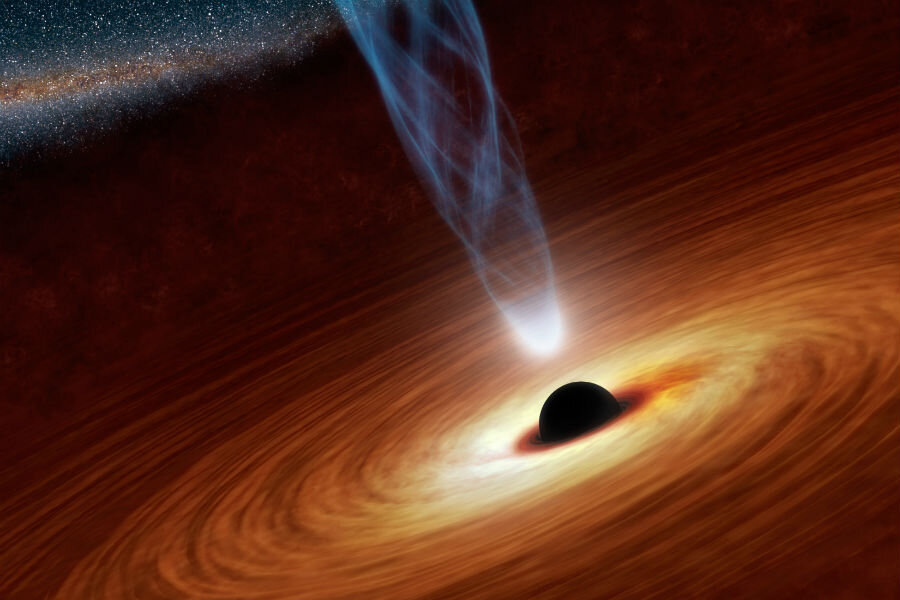Does time run backward inside black holes?
Loading...
Time, at least defined thermodynamically, might not always run forward, at least not inside black holes.
Recent research published in Physical Review Letters may have discovered a new area law in general relativity that describes the geometry of black holes as curved "holographic screens."
In their study, Raphael Bousso, a professor at the University of California, Berkeley and Lawrence Berkeley National Laboratory, and Netta Engelhardt, a graduate student at the University of California, Santa Barbara, developed an alternative explanation of a black hole's event horizon, the point-of-no-return that separates a black hole from its observers.
In 1974, Stephen Hawking proposed that, due to quantum effects around the event horizon, black holes are slowly evaporating, eventually taking with them all of the information dragged into them by their extreme gravity.
The apparent destruction of this information is problematic for certain principles within quantum physics, which hold that information about a system cannot be permanently destroyed. To resolve this apparent paradox, scientists in the 1990s developed the so-called holographic principle, which held that the information is actually preserved as part of surface fluctuations of the event horizon itself.
The principle states that the facts of the existence of black holes in three-dimensional space is transcribed on a two-dimensional surface – in the same way that flat holographic pictures create 3D illusions
In their report, Engelhardt and Bousso developed a new area law that indicates the direction of increase for holographic screens. There are two types – a “future holographic screen” and a “past holographic screen” – and they correspond to different gravitational fields.
"Holographic screens are in a sense a local boundary to regions of strong gravitational fields," Engelhardt said. "Future holographic screens correspond to gravitational fields which pull matter together … whereas past holographic screens correspond to regions which spread matter out."
This means that the direction of time is also different for the screens. In the latter, time goes forward. Our universe, for instance, is a past holographic screen, so by default, we understand thermodynamic time as always going forward. In future holographic screens on the other hand, time runs backwards.
As black holes have the type of gravitational field that Engelhardt first describes – one that intensely pulls matter together, reaching a point of infinite density – they epitomize a past holographic screen. Therefore, inside the perpetually disappearing darkness of the black hole, time runs backwards.
The authors make it clear that they're not suggesting that an astronaut inside a black hole's event horizon could somehow 'see' into the future.
“The event horizon is defined with respect to infinite future elapsed time, so by definition it 'knows' about the entire fate of the universe," Ms. Engelhardt told Phys.org. "In general relativity, the black hole event horizon cannot be observed by any physical observer in finite time, and there isn't a sense in which the black hole as an entity knows about future infinity. It is simply a convenient way of describing black holes."
The Standard Model of Physics is the theoretical framework that predicts interactions of subatomic particles. It describes the functions of components of quantum phenomena, including quarks and leptons, but it is at odds with Einstein's general theory of relativity – that time can go forward and backward.
But this theory of holographic screens offers a way of bridging the gap.
"Our area law holds in the absence of quantum effects, and we hope in the future to prove a more generalized area law which will hold more generally in the presence of certain quantum effects," Engelhardt said.








